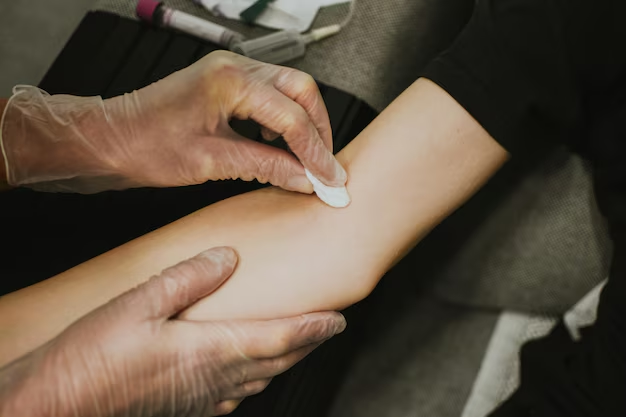Identifying Skin Cancer: What You Need to Look For
Every year, millions of people across the globe find themselves dealing with the diagnosis of skin cancer, a condition that, if identified early, can often be treated successfully. Recognizing what skin cancer can look like is a crucial component of early detection. This comprehensive guide will help you understand how to identify potential signs of skin cancer, exploring the different types and characteristics that can aid in distinguishing benign from suspicious skin lesions.
Understanding the Basics of Skin Cancer
Skin cancer primarily stems from the abnormal growth of skin cells, often as a consequence of DNA damage caused by exposure to ultraviolet (UV) radiation. There are three main types of skin cancer:
- Basal Cell Carcinoma (BCC)
- Squamous Cell Carcinoma (SCC)
- Melanoma
Each type presents differently, and understanding their distinct characteristics is essential in identifying them early.
Basal Cell Carcinoma: The Most Common Skin Cancer
Appearance and Symptoms
Basal Cell Carcinoma (BCC) typically appears in sun-exposed areas like the face, neck, and hands. It often looks like:
- A pearly or waxy bump which may be translucent, allowing one to see blood vessels inside.
- A flat, flesh-colored or brown scar-like lesion.
- A bleeding or scabbing sore that heals and returns.
Risk Factors
Individuals with fair skin, light eyes, and a history of prolonged sun exposure are at heightened risk. However, BCC can affect anyone, regardless of skin type.
Squamous Cell Carcinoma: Often Found on Sun-Damaged Skin
Visual Indicators
Squamous Cell Carcinoma (SCC) is characterized by:
- A firm, red nodule.
- A flat lesion with a scaly, crusted surface.
- A new sore or raised area on an old ulcer or scar.
Who's at Risk?
SCC is more prevalent among individuals with fair skin and those who spend extensive time outdoors without sun protection. However, it can also develop on unexposed areas.
Melanoma: The Aggressive Form of Skin Cancer
Recognizing Melanoma
Melanoma is less common but more concerning due to its aggressive nature. It may appear as:
- A large brownish spot with darker speckles.
- A mole that changes in color, size, or feel or that bleeds.
- A small lesion with an irregular border and portions that appear red, pink, white, blue, or black.
The ABCDE Rule
A useful method to identify melanoma is the ABCDE rule:
- Asymmetry: One half doesn’t match the other.
- Border: Edges are irregular or blurred.
- Color: Multiple colors are present.
- Diameter: Spot is larger than 6mm (about the size of a pencil eraser).
- Evolution: Any change in size, shape, or color.
Factors That Increase Risk
While anyone can develop melanoma, having numerous moles, fair skin, a history of sunburns, or a family history of melanoma increases the risk.
Other Signs of Possible Skin Cancer
Lesser-Known Indicators
Beyond the common presentations, be mindful of:
- New growths or persistently itchy or irritated skin.
- Spots that change color, bleed, or become sensitive to touch.
- A spot that differs from all others on the body, often referred to as the “ugly duckling” sign.
Importance of Self-Examinations
Regular skin checks are vital. Thoroughly checking your skin once a month can help catch changes early. It's important to examine not just high-exposure areas but also unlikely places like the scalp, under nails, and between your toes.
When to See a Professional
Key Tips
If you notice any unusual changes or growths on your skin, it's crucial to consult a healthcare provider. Dermatologists can provide examinations and, if necessary, conduct biopsies to ascertain if a lesion is cancerous.
Prioritizing Professional Guidance
While self-exams are essential, they should not replace regular skin checks from a healthcare professional, especially for those with higher risk factors.
Preventive Measures to Consider
Shielding Your Skin
Taking proactive steps can significantly reduce your risk of developing skin cancer:
- Use Sunscreen: Apply broad-spectrum SPF 30 or higher. Reapply every two hours and after swimming or sweating.
- Wear Protective Clothing: Garments with ultraviolet protection factor (UPF) can shield your skin.
- Seek Shade: Limit sun exposure, especially from 10 a.m. to 4 p.m.
- Avoid Tanning Beds: These can significantly increase your risk of skin cancer.
Lifestyle Improvements
Incorporating a healthy diet rich in antioxidants and maintaining proper skin hydration can aid in keeping your skin healthy and resilient.
Skin cancer, while a common and potentially severe illness, can often be successfully treated if caught early. Becoming familiar with the visual and physical cues of skin cancer can make a difference. Staying informed and vigilant—while maintaining a proactive relationship with healthcare providers—can enhance your chances of recognizing skin changes early on.
🔍 Quick Takeaways
- Types of Skin Cancer: Identify by appearance—BCC, SCC, and Melanoma.
- ABCDE of Melanoma: Asymmetry, Border, Color, Diameter, Evolution.
- Protection is Key: Regularly use sunscreen and wear protective clothing.
- Self-Checks Matter: Conduct monthly skin examinations and note any changes.
- Consult Professionals: If in doubt, seek medical advice promptly.
Remember, early detection is key in the fight against skin cancer. Stay informed, protect your skin, and never hesitate to seek expert opinions if you notice changes. 🌞🩺

Related Articles
- Are Breast Cancer Lumps Painful
- Are Chills a Sign Of Cancer
- Are Colon Spasms a Sign Of Cancer
- Are Lytic Lesions Always Cancer
- Are Polyps Cancer
- Can a Blood Test Detect Cancer
- Can a Ct Scan Detect Cancer
- Can a Dexa Scan Show Cancer
- Can a Gastric Emptying Scan Show Cancer
- Can a Lung Biopsy Cause Cancer To Spread